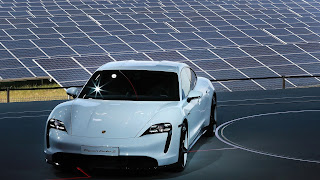EVs: The Future of Vehicles
Electric vehicles are growing in popularity and certainty in mind space. Their growth, however, is still considered just a market problem. The end user should choose based on what cost to buy and run, or how it performs. Today in a competitive world, most people are moving from one place to another place for survival. So, they choose different types of vehicles to move. By using electric vehicles we can control pollution.
ORIGIN
The first practical electric car was produced in the 1880s. Around 1832, Robert Anderson develops the first crude electric vehicle. But it isn’t until the 1870s or later that electric cars became practical. Robert Anderson invents the crude electric carriage powered by non-rechargeable primary cells. The Indian government made its first concrete decision to incentivize electric vehicles in 2010. Under a ₹95 crores scheme approved by the Ministry Of New and Renewable Energy (MNRE), the government announced financial incentives for manufacturers of electric vehicles sold in India.

SIGNIFICANCE OF ELECTRIC VEHICLES
India announced its commitment to reduce its emission intensity by 2030. However, it is going to be a herculean task, unless carbon-emitting ways, especially in the automobile sector. India has a long way to go in where electric vehicles (EVS) can play a major role. In India, the automobile industry is one of the key sectors driving economic growth. The government is acting as a facilitator by providing support such as subsidies and developing policy frameworks, emphasizing on the importance of electric three-wheeler or e-rickshaws in the Indian context. Innovation in this sector will encourage cutting-edge technology in India through adoption, adaption, and research & development. EVs manufacturing capacity will promote global scale and competitiveness. In the case of diesel cars, the quantity of pollutants is even high. While pollution control technology is being improved continuously over time, the complete eradication of pollution release is yet to be accomplished. An electric car doesn’t rely on any fuel combustion process to produce energy. So, they produce zero levels of pollutant gas or particulate matter and effectively run on 100% clean energy. They have the simplest driving method in the world of automobiles. Owners of an EV have the advantage of much lower running costs as electricity to charge an EV workout around a third as much per kilometer as buying petrol for the same vehicle. Electric vehicles in India have opened ample business opportunities for automobile companies within the country and the globe. The Indian government has taken an ambitious goal of making 30% of vehicles in India electric by 2030. The acceleration of converting to electric vehicles happening at a rapid pace. By 2023 the government wants all three-wheelers to run on batteries by 2025 this rule is expected to expand to two-wheeler. Electric vehicles create a significant role in the power sector mainly in the application of the smart grid and act as smart vehicles through grid communication.
IMPACT ON ECONOMY
India plans to offer $4.6 billion in incentives to companies setting up advanced battery manufacturing facilities as it seeks to promote the use of electric vehicles and cut down its dependence on oil, according to a government proposal seen by Reuters. Tesla, BMW, Nissan, Chevrolet, Ford, Volkswagen, and Kia are 7 leading manufacturers of electric vehicles. The promotion of EVs will facilitate employment growth in the automobile sector. They create an opportunity and push the domestic industry. Many states in India are racing ahead through policy groundwork, boosting the adoption of EVs. Some of the popular policies by the government are the National Electric Mobility Mission Plan 2020, and the Scheme for Faster Adoption and Manufacturing of (Hybrid) Electric Vehicles in India (FAME). The electric vehicles industry should progress more smoothly and for that, the government has to bring in a few procedural changes. The government has also expressed its intent to make India a global EV and battery manufacturing hub. It would encourage setting up Lithium-ion battery production as well as charging infrastructure in the country.

CHALLENGES OF ELECTRIC VEHICLES
The shift towards renewable energy sources has led to cost reduction from better electrical generating technologies. This has introduced the possibility of clean low carbon and inexpensive grids. But there are many limitations for developing countries like India. India does not have any known reserves of lithium and cobalt, it is dependent on countries like Japan and China for the import of lithium batteries. Rupee depreciation has negatively affected such imports. EVs have higher servicing costs and a higher level of skills is needed for servicing. India lacks a dedicated training course for such skill development. Electric vehicles would also require charging infrastructure to be set up in tandem. Electricity sales in the country are regulated under Electricity Act and can be carried out with a distribution license from SERCS. To set up a pan India charging infrastructure, an overhead of existing regulation is needed. The EV space will also turn out to be like the proverbial ‘chicken and egg situation’ where electric cars came first and charging infrastructure will come later. But that was the case even with Internal Combustion Engine (ICE) vehicles, where the cars came first and the roads came later. But in the meantime, the government needs to promote hybrids and plug-ins to create an enabling ecosystem for buyers of EVs and those who need to invest and earn profits from setting up the charging infrastructure.
CONCLUSION
Electric vehicles are very useful for us. Because petrol and diesel are very costly and remain very few in quantity. It produces smoke in our environment, so I prefer electric vehicles. The electric vehicle has a problem in that we have very few charging points. At this time India only can bear this if EVs come with tremendous technical changes according to DEMAND- DESIRE AND DREAMS.


